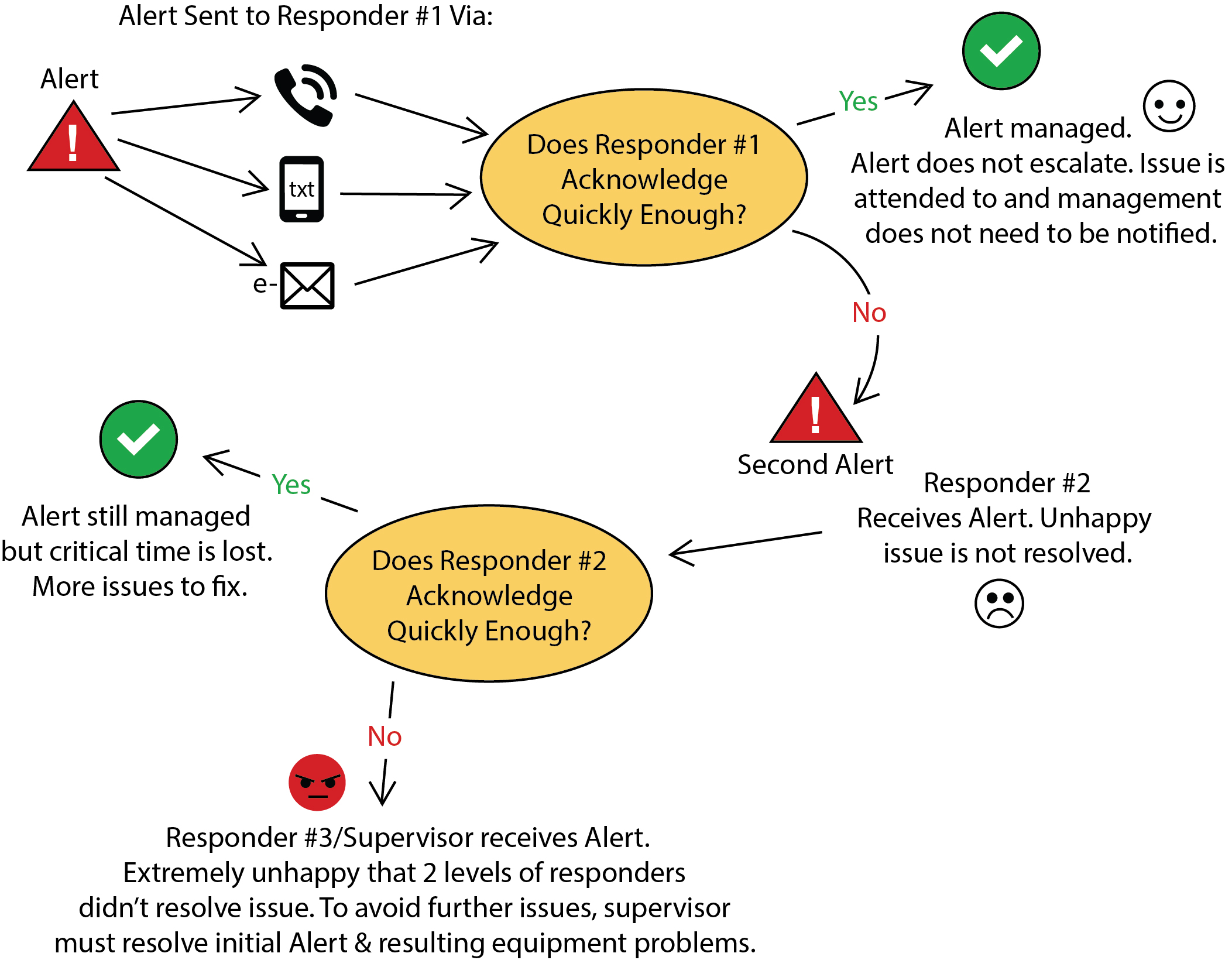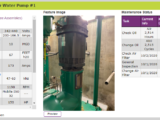Alert System Features: “I Get Calls on My Corded Phone. What Else Would I Need?”
These features allow you to check the status of your equipment from anywhere - and keep you prepared for the future.
An alert and notification system is used to alert or notify the proper personnel that an issue has occurred that they need to know about. In today’s world it seems that everything has a notification system associated with it, from your bank telling you that your account is overdrawn to a thermostat telling you the temperature in your house is too low. Most notifications arrive in the form of a text message or email. The largest companies in the world are utilizing cloud-based solutions in order to manage these notifications. The industrial world is lagging behind and many in the industry do not understand the differences in the available solutions, as well as the future impact on their system scalability and ease of use. Consider this list of top alert system features during your search for the best alert system.
Integration with Your Existing Equipment, SCADA and PLC Systems
For industrial applications, an alert system should be able to integrate easily and reliably with all your existing equipment and automation, which includes PLC and SCADA packages. There are two basic methods of accomplishing this. The first method is direct to equipment via a hardwired connection. The second method is through direct communications with the automation platform. The chosen solution should allow for both methods.
Alerts and Notifications Sent to Your Mobile Devices Via Text, Email, or Voice Call
You should be able to receive alerts and notifications on your mobile devices to let you know the status of your equipment from anywhere! Since your mobile devices do more than receive voice calls, you should choose an alert system provider that sends alerts via text and email as well! When you are unable to answer phone calls, you will still get these crucial messages in other ways. In addition, text and email alerts are easy to forward to coworkers who may need to get involved.
Alert Management
The system should include the ability to:
- Set different permission levels for who can manage alerts
- Allow certain users the ability to change alert thresholds
- Easily add and remove people from the notifications
- Easily modify how a person receives an alert or update a phone number.
Alerts by Group
Not all alerts are meant for all people. The alert system needs to be able to send different alerts to different groups of people. For instance, a maintenance personnel may want to get an alert about a pump failure and an operator wants to see alerts about the process such as a high tank level.
Alert Acknowledgement
You need to be able to acknowledge alerts on the device that you received them. If you received a text on your mobile device, then you should be able to respond to that text from your mobile device. The same applies to voice and email.
Alert Escalation
An industrial alert system should allow for escalation of alerts. If an alert is not acknowledged by Responder #1, then it needs to be escalated to the next in line and up the chain of command.
(Click on escalation graphic to enlarge and zoom)
Reliable and Timely Delivery
It is essential that you receive alerts in a reliable and timely manner. When something happens, the sooner you know about it the easier it is to correct the issue and mitigate any damages that may result. An on premise only system may be involved in the issue (i.e. power failure, UPS failure, phone line or network failure, etc.) and you may not know whether the alert system is functioning or not. Consider an off-premise monitoring solution.Relentless
Critical system issues can cause major problems if you do not know about them right away. The system you choose should be relentless.Alerts by Time of Day or Day of Week
Some notifications only need to be sent to certain personnel at certain times of the day or days of the week. A non-critical issue with a pump can wait until normal working hours to be addressed. Personnel that only work certain shifts only need to know about the alert when they are working. The alert system should be able to handle these scenarios.Alert History
An alert solution should include more than just alert information which at minimum is the title, and the date and the time it was issued. It should also include who acknowledged it, when it was acknowledged, as well as when it returned to normal. The current status and history should also be included. Alert history should be in a centralized location to make it easier for a person to decide how to solve the issue, who needs to solve it, or if it can wait. Read our case study about the issues that arose when a municipality relied on a notification system with only a general alarm.Scalable and Future Upgrades
As your system grows, you will need your notification system to grow with it. Hardwired solutions are independent from software upgrades, but more limited when it comes to easily or cost effectively adding more alerts. Software solutions give you the ability to easily add alerts as you grow, however are dependent on the operating system and may require upgrading as you upgrade your automation. Hardware appliances offer the best of both worlds.Choosing the right alert system for your needs can be very challenging. There are many things to be considered between solutions, so be sure to do your research!
Follow us on
About The Author
The President and founder of Data-Command with over 25+ years of business development, 35+ years of automation, and 40+ years of software development experience. In 2005, Data-Command was born from his passion to provide information to municipalities and industry that would have a positive impact on their operations, and he has never lost this passion.



